Report

This article is part of Bain's 2021 Technology Report.
The case for the hybrid cloud has never been stronger, because enterprise computing environments are more complex than ever. As technology vendors try to capitalize on the hybrid cloud opportunity, they’re finding that one way to bring order to the chaos is to better understand the emerging customer archetypes in this fast-evolving, strategically important sector.
Despite the accelerating shift to the public cloud, data will continue to be spread across on-premise and public cloud infrastructure for the next few years, and demand for interoperability is skyrocketing (see Figure 1). The bottom line is most companies need some sort of hybrid solution.
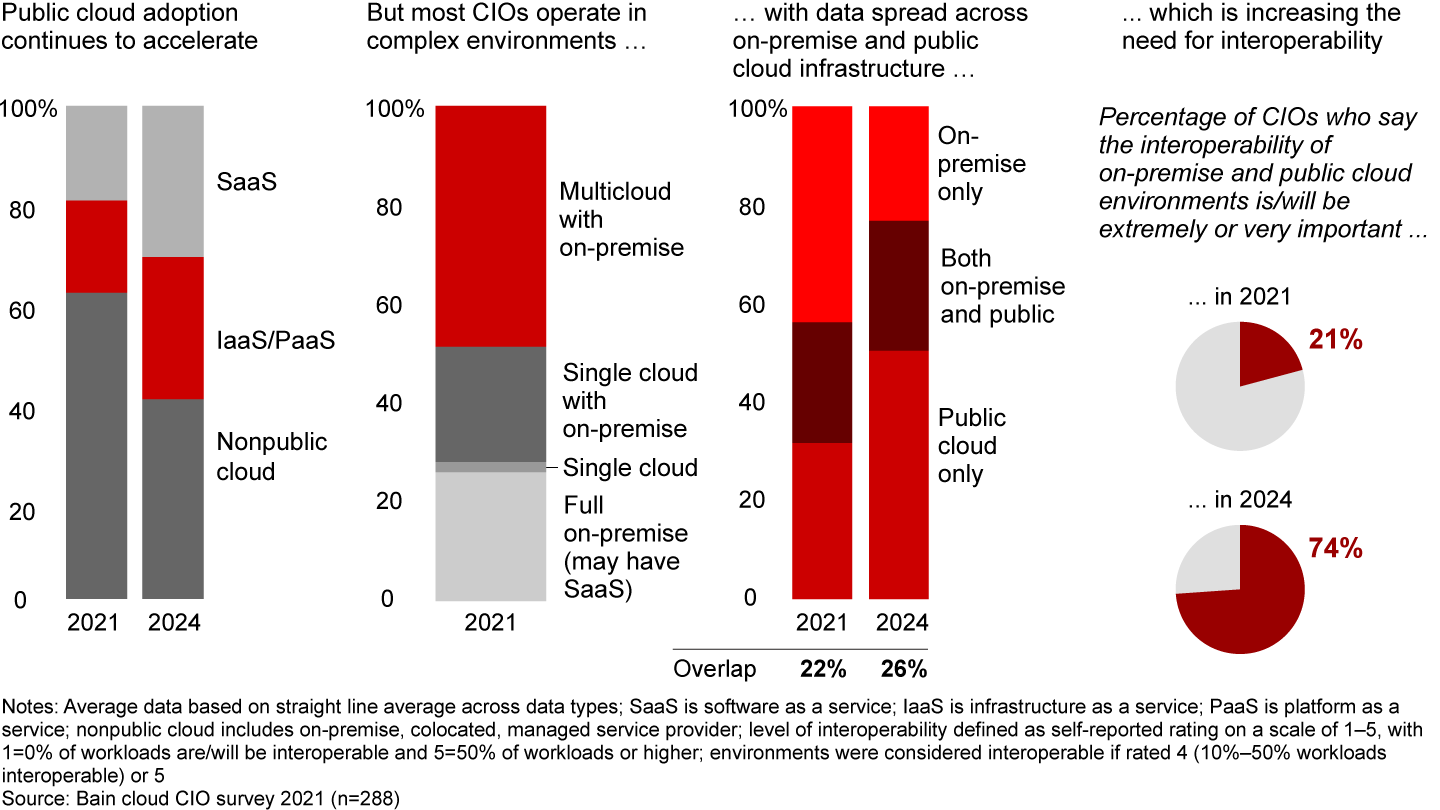
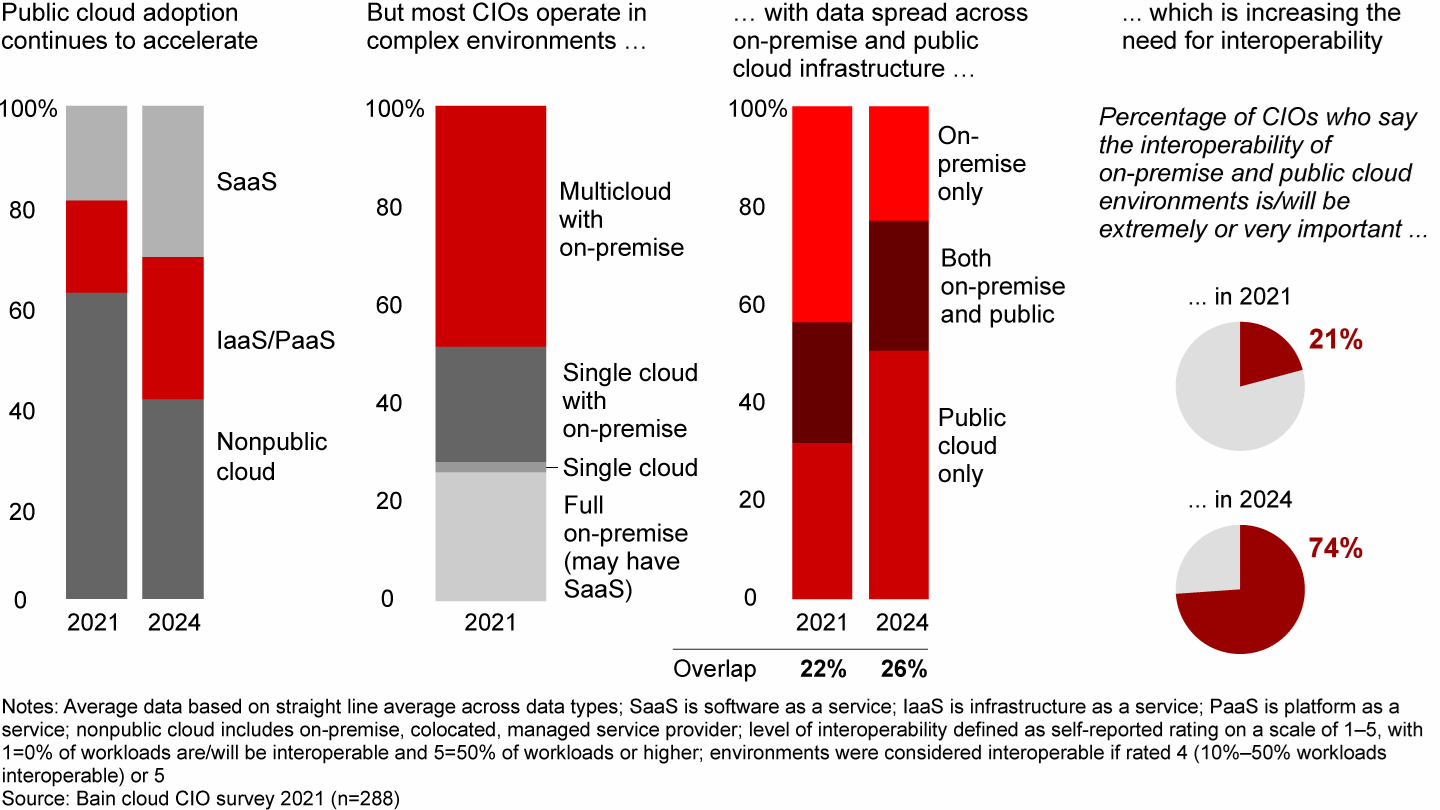
Part of the challenge is that the lack of a standard hybrid cloud-adoption model has led some companies down misguided paths. We believe that two dimensions can help outline the emerging models: the complexity of the company’s on-premise and public cloud environments, and the level of interoperability across these two environments. For example, how many public clouds is the company using, and what percentage of its computing resources is running on public cloud servers? Do the two environments operate in silos, or are they managed through a single pane of (virtual) glass?
Leading hybrid cloud technology vendors are starting to recognize that defining the major customer archetypes and deeply understanding each group’s varied challenges, priorities, and likely evolution can enable them to navigate the chaos. And for heritage technology vendors, this is all happening against a backdrop of cloud service providers attacking the on-premise estate with a promise of product fulfillment in weeks instead of months. Customer segmentation can help all of these vendors sharpen their focus and tailor their offerings to the priority customers they can serve best, ultimately strengthening the vendor’s position in this vibrant sector.
Based on our analysis of the market and experience helping companies develop hybrid cloud strategies, we’ve identified seven main customer archetypes, each with distinct needs (see Figure 2).
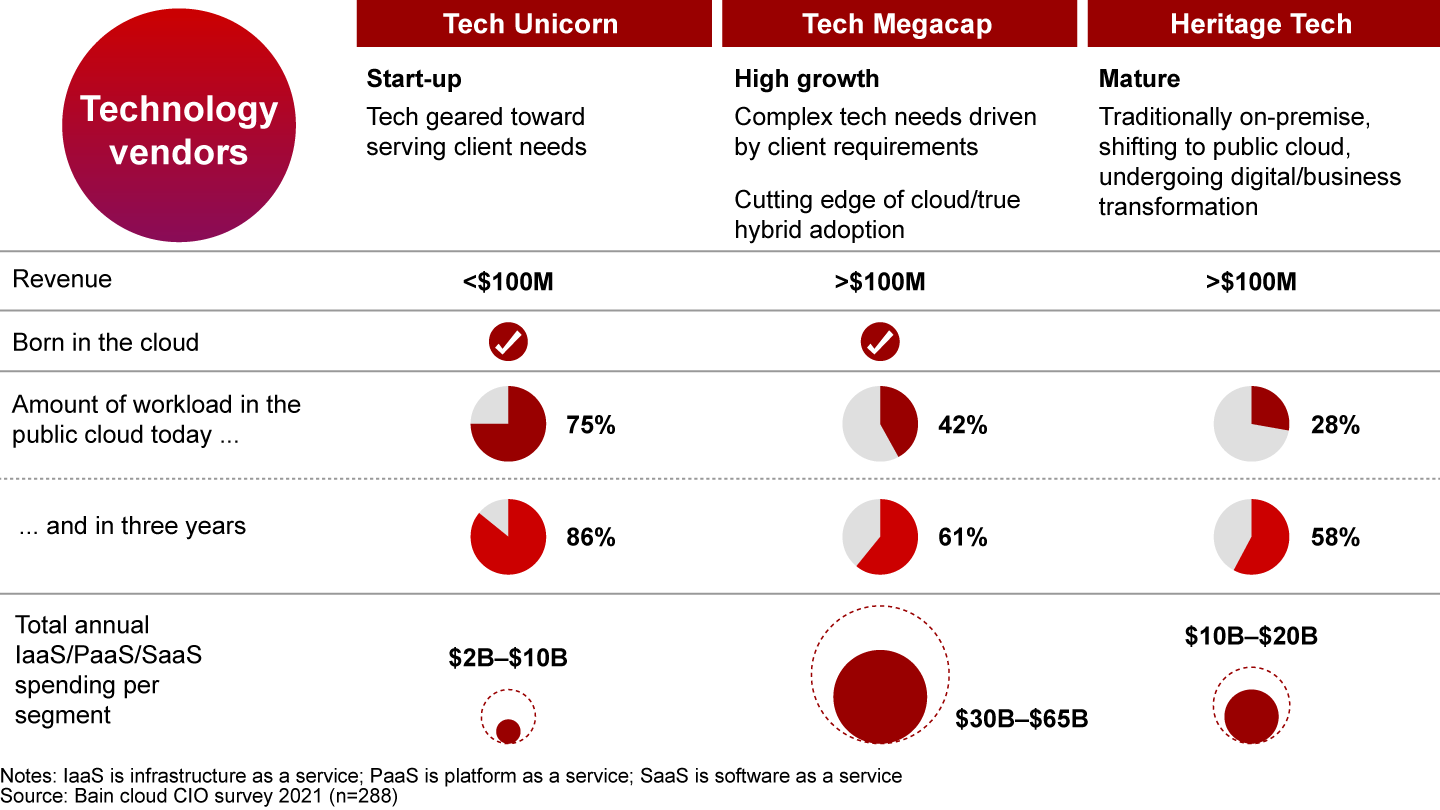
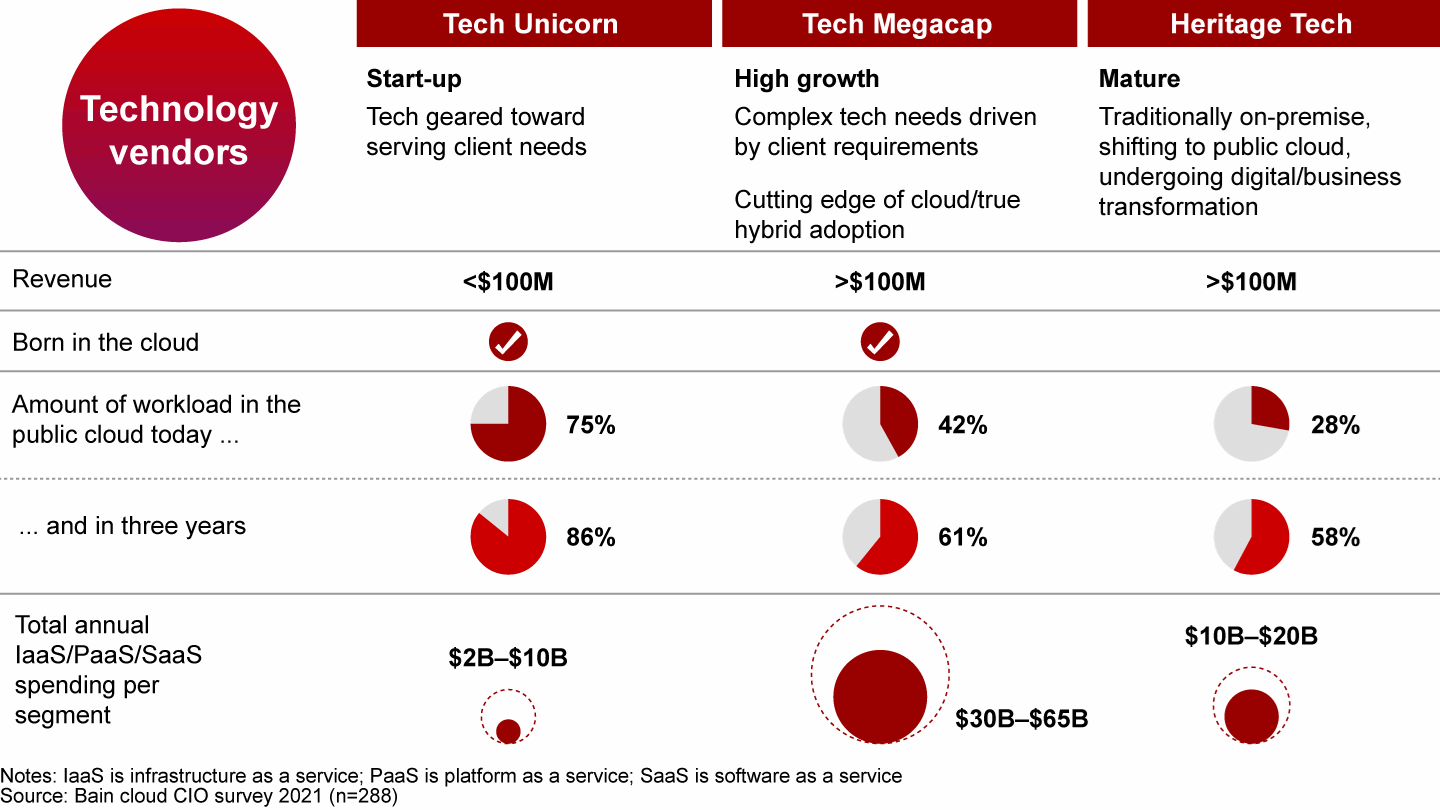
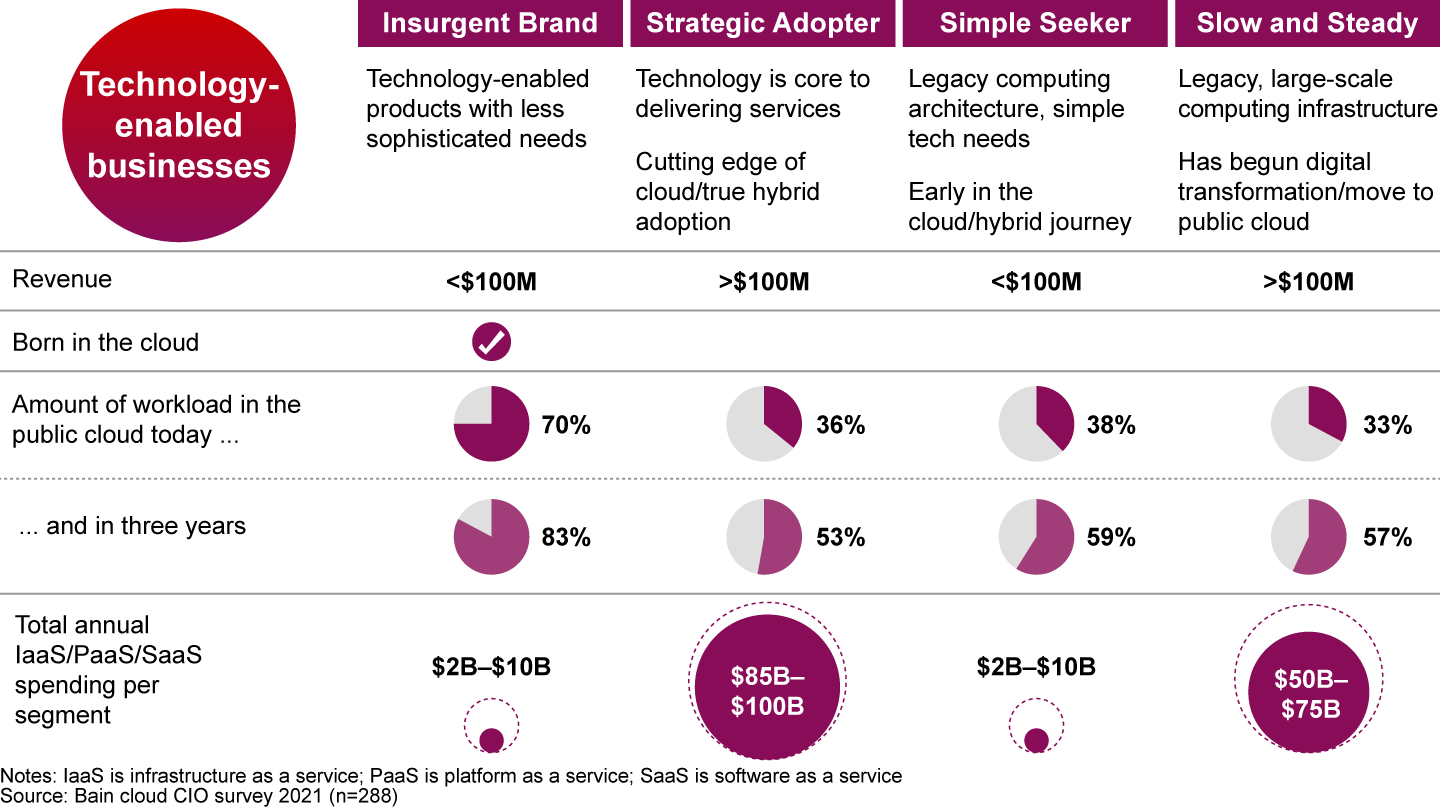
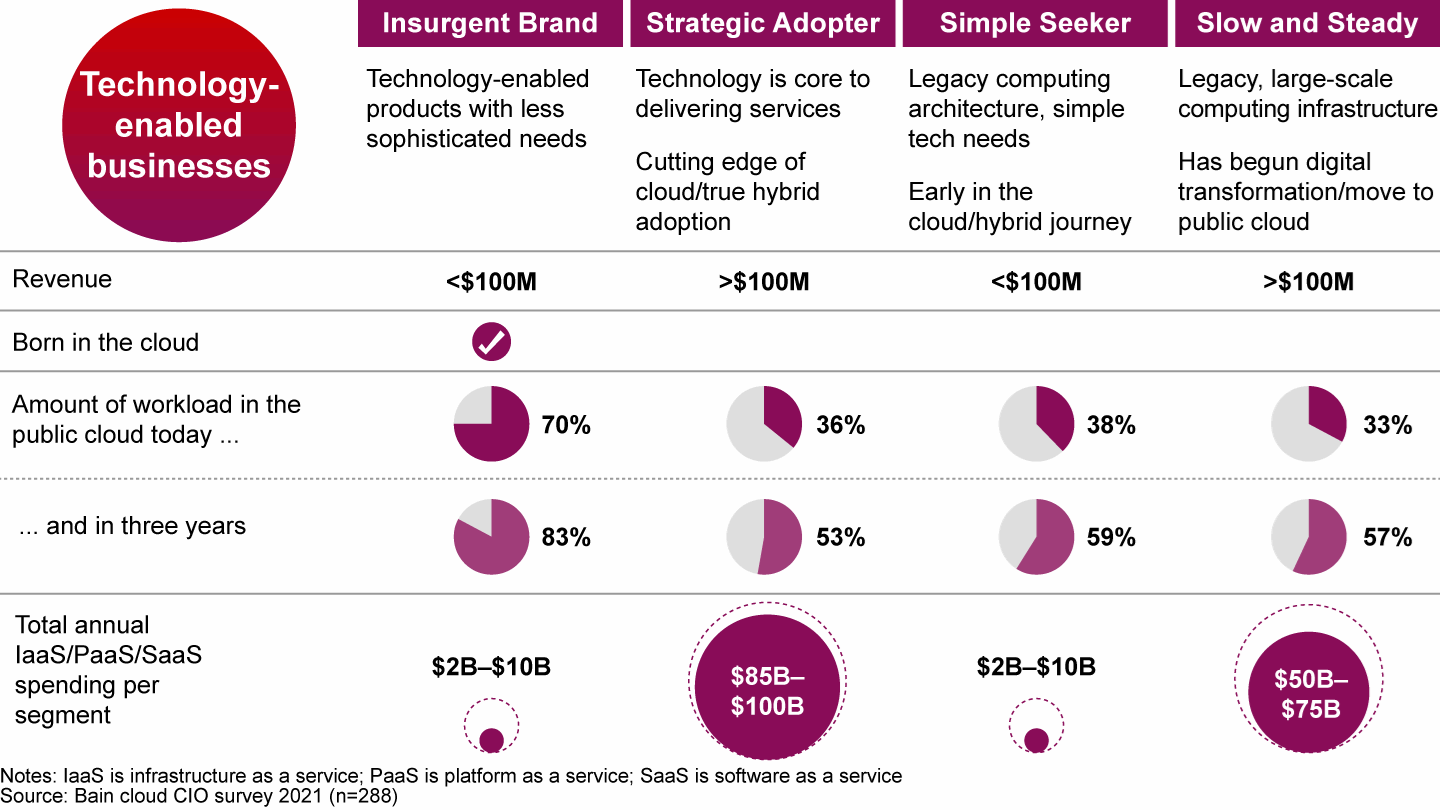
What might a customer segmentation project look like on a granular level? Let’s trace two companies’ distinct hybrid journeys in the context of these archetypes.
Strategic Adopters: These large, tech-enabled enterprises typically spend at least 5% of their revenue on turning technology into a competitive advantage. They’ve shifted a meaningful chunk of their computing workloads to the cloud, but now they need to improve interoperability to realize the cloud’s full value and to modernize their remaining complex, legacy applications (see Figure 3).
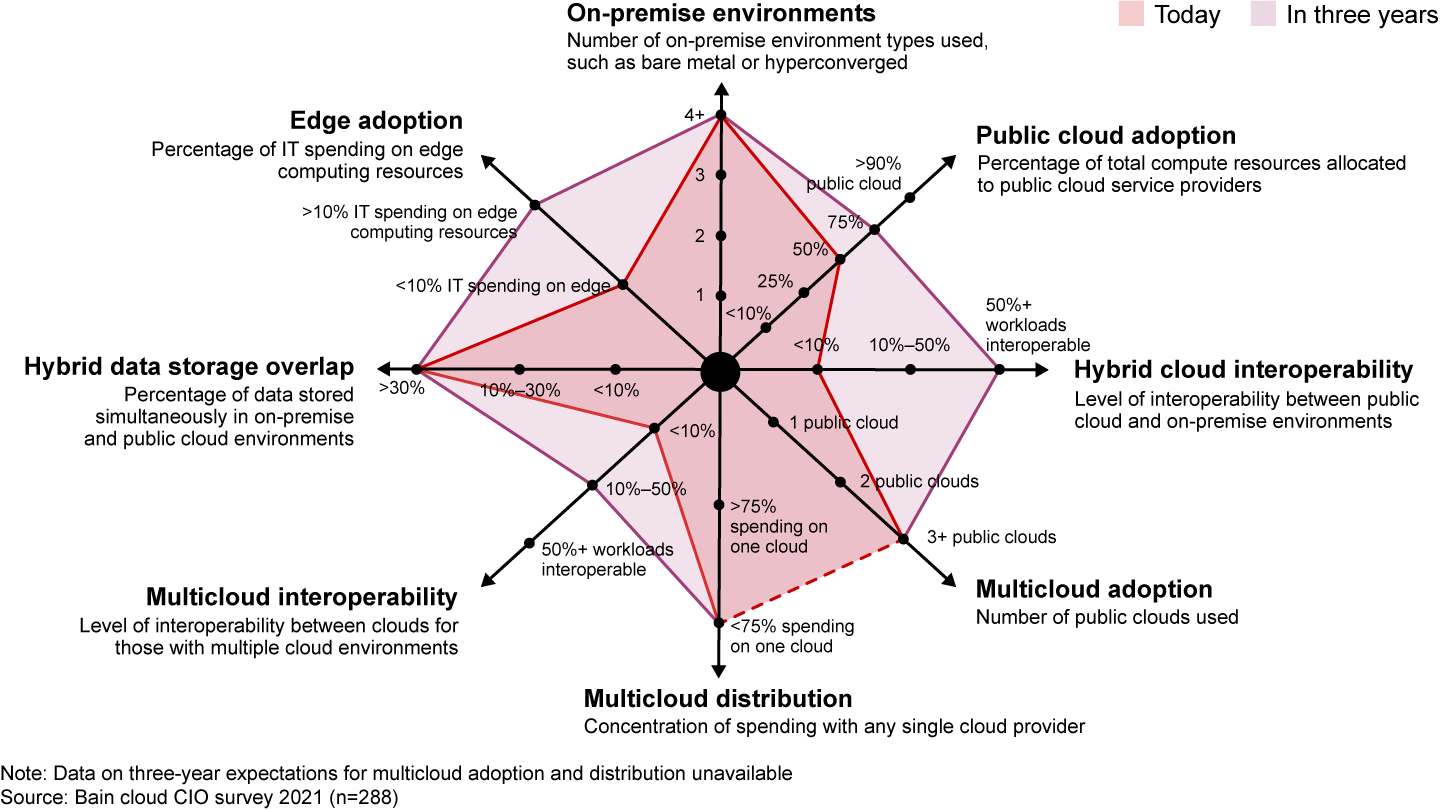
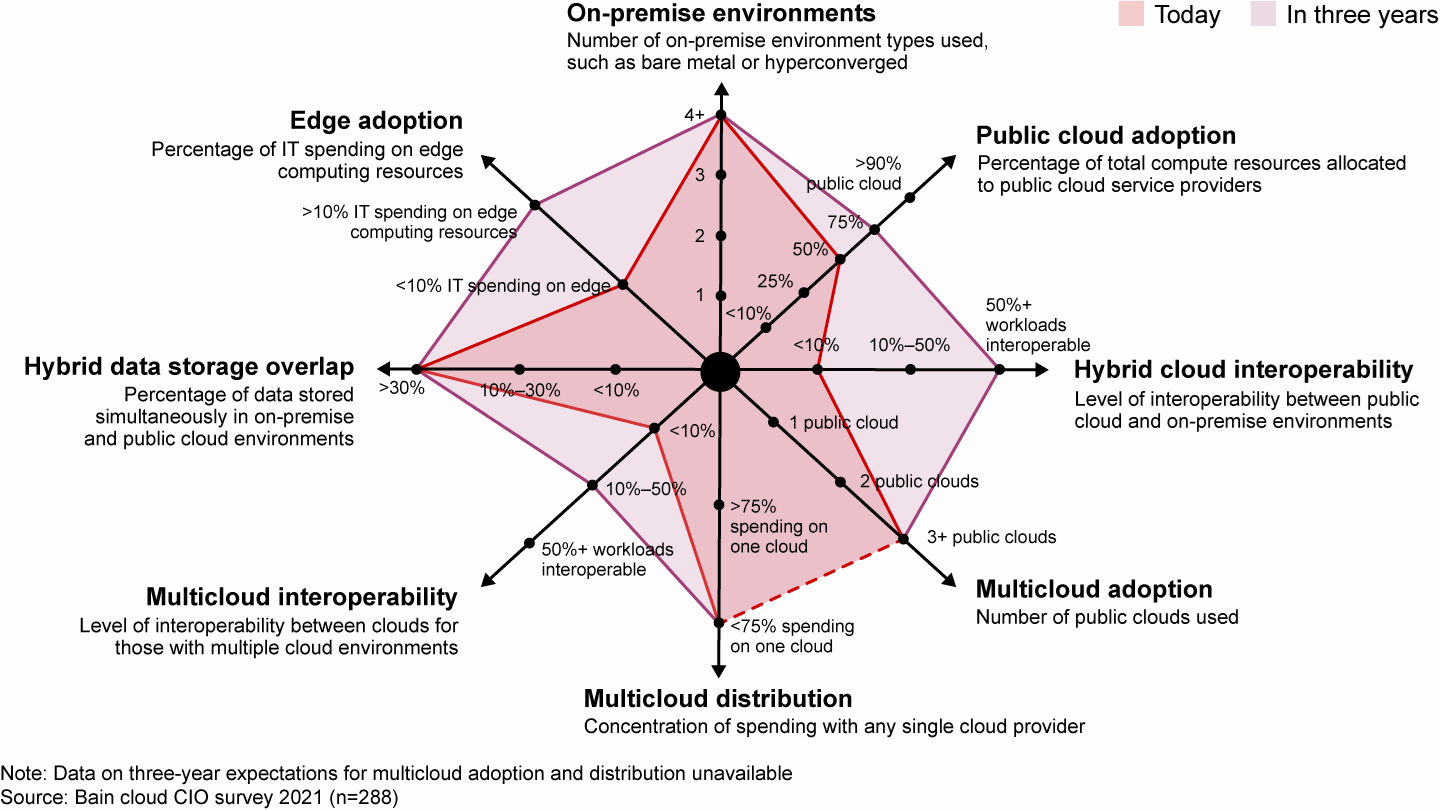
One North American professional services firm has made substantial progress down its hybrid cloud path. About 15 years ago, each of its offices operated IT silos reliant on on-premise servers. This led to inconsistent computing performance and service. Management eventually determined the company was spending too much time and money managing its IT infrastructure. Since launching a hybrid transformation a few years ago, only 20% of its IT workloads and 20% of its data remain in on-premise servers, primarily to improve latency times for key business services. The rest of the workloads run on the public cloud and in a managed services environment, freeing up the company to focus on its core business. To date, the firm has primarily used one public cloud vendor because its leaders believe the benefits of multicloud don’t outweigh its added complexity.
For the next phase, the company plans to continue shifting on-premise workloads to the public cloud, while investing more in interoperability. However, this could be the most complicated and slowest phase of its shift to the cloud: The company saved for last the on-premise workloads that will be the most time-consuming and resource-intensive to transition.
Slow and Steady: This other cohort of large, tech-enabled enterprises has substantially different needs. These companies typically have yet to form a clear hybrid strategy. They’re also seeking a solution to move basic workloads to the cloud while ensuring bulletproof security, rigorous governance, and compatibility with their large, remaining on-premise footprint (see Figure 4).
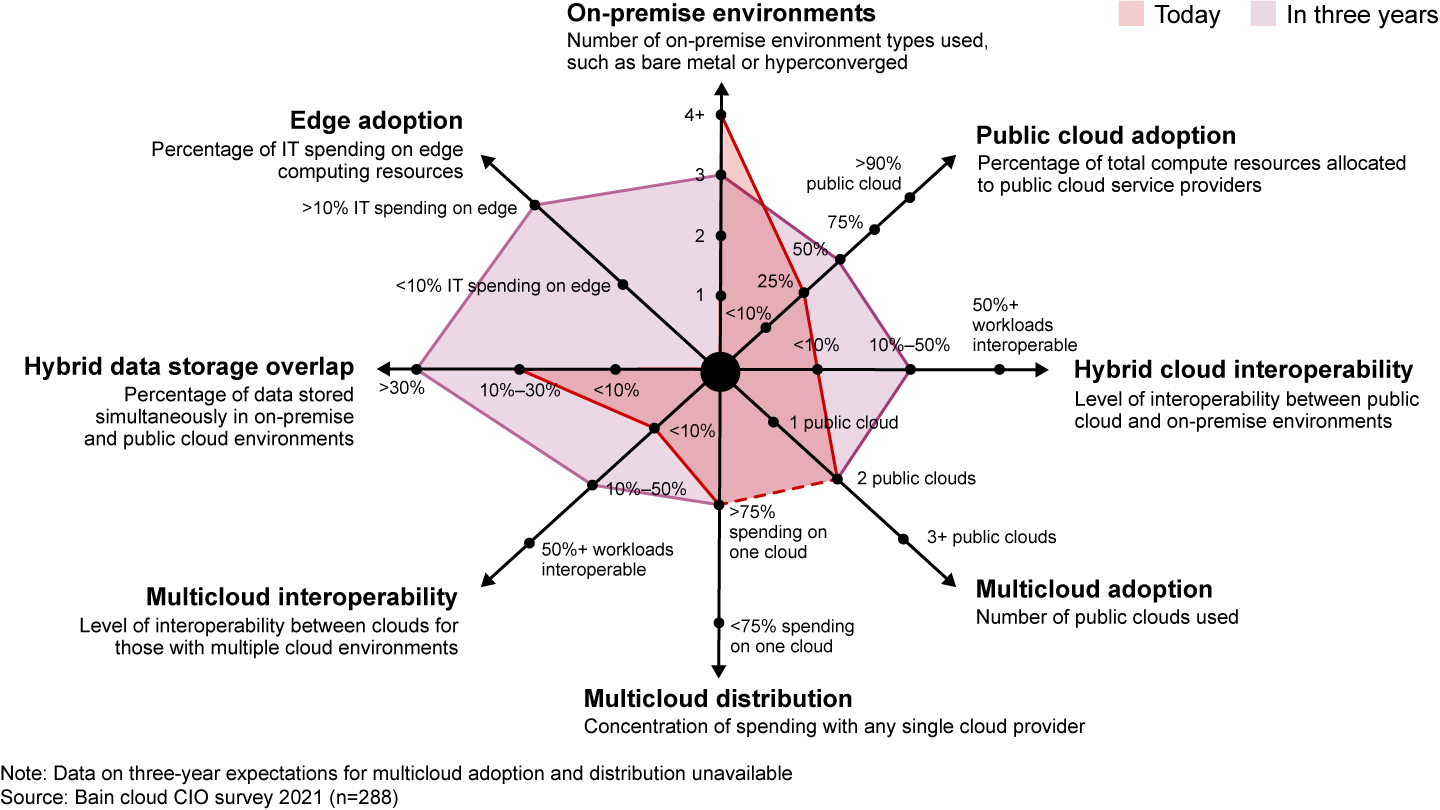
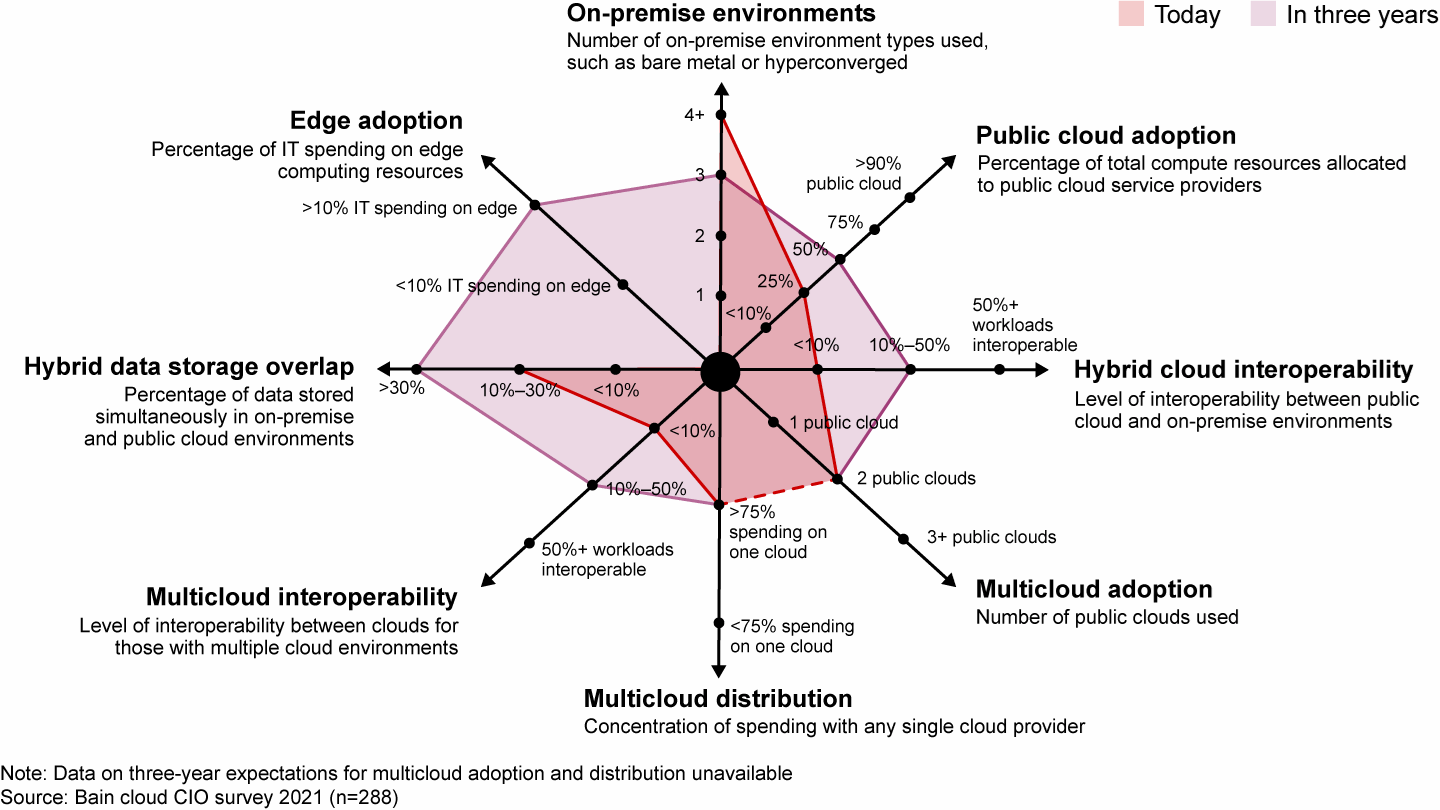
Consider a large healthcare company that has multiple clinics across the US. It relies on some software-as-a-service applications. But 60% of its computing workloads are on-premise, and its infrastructure-as-a-service usage and interoperability across environments are both minimal. The healthcare company plans to move more workloads to the public cloud, but its leaders are hesitant because of concerns about the security and privacy of patient data and potential compatibility issues with legacy computing workloads. At the same time, the company is under pressure from customers to use multiple public clouds because they want to tap into the different services each vendor offers, but it’s struggling to manage the complexity that comes with a multicloud approach.
What does all this mean for technology vendors?
At a fundamental level, customer segment prioritization has profound implications for hybrid cloud vendors’ strategy. The most successful leaders start by making sure everyone across the organization is aligned on the priority customer segment(s). In other words, do the teams across brand marketing, product marketing, product roadmap, go to market, ecosystem strategy, and customer success all serve a common set of buyers in a consistent and optimal way?
A helpful exercise is to contrast the way a buyer in one category―say, a Tech Unicorn―discovers and evaluates a product, with the approach of a buyer on the opposite end of the spectrum, like Slow and Steady.
- Whom are we targeting with our marketing message? A Tech Unicorn has probably empowered individuals closer to the IT front line to make more choices, whereas Slow and Steady is more likely to require multiple senior stakeholders—CIO, CTO, CFO, business lead—to agree on a solution.
- How do they want to buy? A Tech Unicorn will almost invariably want “pay-by-the-drink” or outcome-based pricing, with minimal up-front expenses. Slow and Steady might prefer to tap the capital budget to make a large, one-time purchase, perhaps via an enterprise license agreement.
- What ecosystem partnerships do we need? A Tech Unicorn might evaluate the product through open-source projects, conversations with early-stage start-ups, and availability on marketplaces operated by Amazon Web Services, Microsoft Azure, and Google Cloud. For Slow and Steady, vendors might need to build awareness and capabilities within global IT system integrators; integrate their cloud products with legacy platforms; and tap traditional value-added reseller and distributor channels.
The overarching takeaway is that if different functional leaders within the firm are aiming at different market segments and deploying inconsistent strategies, it’s almost certain to result in an incoherent mess that delights no one. Leading vendors are figuring out how to unite their teams around a cohesive plan that delivers what target customers want.